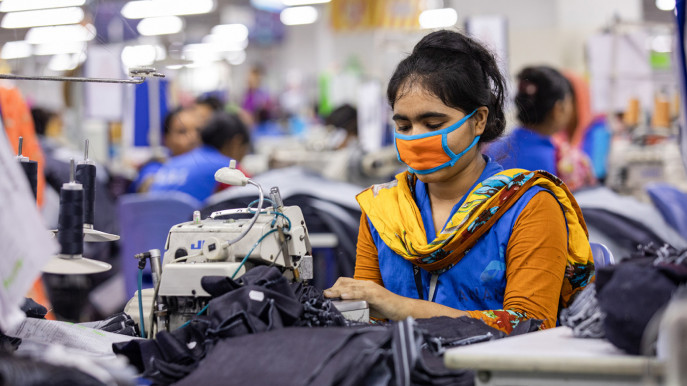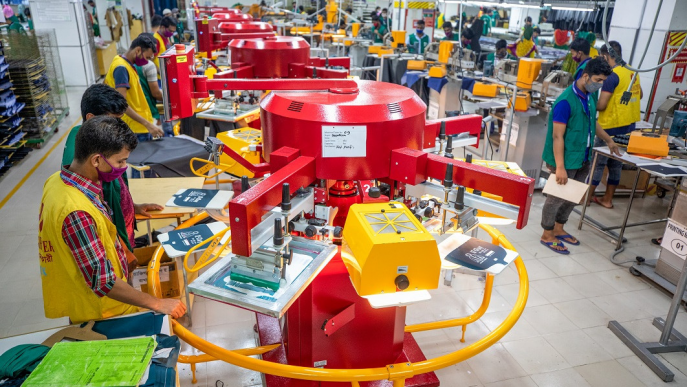Open costing is sharing detailed information about the cost breakdown of each garment with suppliers, in which a supplier compiles an itemised list of costs, rather than a fixed price. Recently, the concept is getting some buzz in the industry.
On March 4, 2024, Chairman of AJI & AB Group M A Jalil Ananta proposed an idea for the RMG manufacturers during his speech at the panel inauguration for the biennial polls of the BGMEA — adopting open costing for all ready-made garments (RMG) products.
He proposed that the costs of all items in the RMG industry would be put under categories and posted on the Bangladesh Garment Manufacturers and Exporters Association (BGMEA) website for buyers. It will accompany a price floor. Any RMG manufacturer selling any goods at a cheaper rate will be penalised by the BGMEA.
While his intention to improve transparency and ensure a fair price for the manufacturers is commendable, the system’s impact on buyers’ profits and the industry’s competitiveness need careful consideration. In a diverse RMG industry such as ours, open costing may not be easy to implement.
The pros of open costing
In our country, RMG factory owners have often faced accusations of labour exploitation in their efforts to keep production costs low. Meanwhile, buyers also put pressure on the manufacturers to take orders at very low prices. Open costing, in theory, can put an end to this.
“The buyers come to us and say – your price is very high, the other companies’ prices are so low. If you can’t take orders at low prices, there are other places who can. Thus, they exploit us and make us take orders virtually free of cost,” Ananta said during his speech.
Open costing could establish a baseline price floor that prevents manufacturers from undercutting each other and sacrificing profit margins. This could create a fairer pricing environment where manufacturers are compensated for the true cost of production, allowing them to invest in better materials, labour practices, and compliance.
If open costing leads to higher profits for buyers, there’s a chance they might reinvest some of those profits back into the supply chain. This could involve funding initiatives for better wages, skill development programs for workers, or improved working conditions in factories.
Open costing can also increase transparency at a time when the apparel sector faces increasing demands to be more transparent about their supply chains as it involves offering suppliers comprehensive information about the cost breakdown of each item of clothing.
Open costing can also eliminate the current system, where buyers might suspect unethical practices behind unrealistically low production costs, or when higher prices confuse them.

Photo: TBS
It is not a completely new concept in our RMG industry. At some places, it is already used at the request of certain buyers.
Faisal Samad, Senior Board member of BGMEA and Managing Director Savartex group, told the Business Standard, “at this moment, we are implementing open costing for some buyers. It is being done to protect their interests. It is part of their negotiation process to get the best deal from us.”
Open costing is not practical
Shams Mahmud, the president of the Bangladesh Thai Chamber of Commerce and Industry and Managing Director Shasha Denims Ltd has pointed to the impracticalities of the proposal.
“The cost of raw materials is just one component of the pricing,” he said, “there are many other components that determine our pricing. Twenty years ago, when we used to just sew and knit, open costing might have worked then. But our industry has evolved to become more advanced, more complex; now implementing open costing is not practical at all.”
Open costing wouldn’t account for fluctuations in raw material prices (cotton, yarn), which can significantly impact production costs. This could leave RMG manufacturers vulnerable if they are unable to adjust their prices accordingly. E
Faisal Samad is also of the opinion that it would be hard to implement.
“Our RMG industry is a free competition. You can not force someone to set their prices unless there are some regulations and implementation. The manufacturers set their prices up based on their liabilities, their income potential, their expected income potential etc. So, it varies from one manufacturer to another.”
Exchange rate fluctuations can affect the overall cost of production in Bangladesh. Open costing wouldn’t account for these fluctuations, potentially leading to situations where manufacturers are unable to fulfil orders profitably.

Photo: TBS
So, with a readily available cost breakdown, RMG manufacturers might have less motivation to innovate and find ways to become more efficient; as research and development (R&D) is costly. This could lead to stagnation in production methods and a lack of investment in automation or technology.
Shams Mahmud highlighted, “In our factories, we invest a significant amount of our profit into R&D. The profit that gets spent into R&D has to be recouped, right? If open costing is implemented, nobody would want to invest in R&D.”
At the same time, manufacturers might prioritise meeting the pre-defined cost categories rather than focusing on differentiating their products through unique designs, materials, or value-added services. This could make them less competitive against manufacturers who offer a wider range of options, reducing our competitive edge in the global market against the new contenders.
Open costing only reveals direct costs
Open costing might only reveal direct costs (materials, labour) but not fully transparent overhead costs (factory rent, utilities). This could give buyers a false impression about the cost of production.
Mahmud explained the indirect costs of the business, “We send our technicians and compliance experts abroad to learn more. It costs us significantly. We do this to ensure better productivity. If the employees are better trained, the output increases.”
“Also, costs vary from factory to factory. For example, if a factory is outside of the EPZ, the water bill rate is Tk 2 per cubic metre; and for a factory inside the EPZ, it is Tk 42 per cubic metre. See how indirect costs vary? So how would open costing even work here?” he added.
May reduce the leverage of the manufacturers
With all costs exposed, buyers would hold all the cards in negotiations. Manufacturers lose their leverage in price setting negotiation. Thus, it will frustrate the very reason Ananta wants open costing in the first place.
Also, knowing the cost structure, some manufacturers might manipulate specific cost components (like labour or materials) to meet the price floor, without actually improving efficiency. This could create a race to the bottom in terms of quality or ethical practices.
Setting up a price floor is a good idea
Open costing may not be fully practical, but setting a price floor is a good idea for our RMG industry to promote labour rights and fair wages. As a hub for RMG, we have spent years stuck in a downward spiral of unit prices. People frequently draw a comparison between the final cost of garments and the wages paid by garment manufacturers.
There is also the argument that Bangladesh has a large number of suppliers competing for many buyers, forcing prices lower, as buyers take advantage of the conditions created by the market. So, setting up a price floor will allow us to make healthy profit and escape buyers’ exploitation.
A price floor could prevent producers from undercutting each other and sacrificing profit margins. This could allow them to invest in better quality materials, improve working conditions, and potentially become more competitive in the long run.
Samad has been a proponent of price flooring for years now. He said, “We have talked about establishing floor pricing at the BGMEA before. In order to ensure healthy competition, promote a good business environment, and ensure that buyers are not taking advantage of us, price flooring will be quite helpful.”
“And it will be good for both sides as well. If a manufacturer is selling products at very low prices, he is cutting corners and not delivering the best product. And also, if a buyer wants to buy products at very low prices, we can show them our price floor and protect our interests. So, rather than open costing, price flooring is a good strategy for us at this moment.”

Shadique Mahbub Islam. Sketch: TBS
















